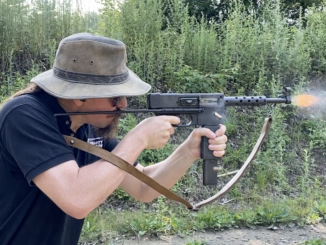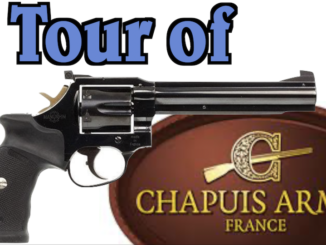During 1944, the US and UK cooperatively ran a major effort to drop arms and equipment to French Resistance forces in preparation for the Allied landings in France. It began as Operation Carpetbagger with night drops from B24 Liberators in January 1944, and escalated into the summer. Eventually a number of massive daytime drops were made, totally more than 800 sorties and dropping 2.7 million pounds of equipment. The single most common firearm dropped was the MkII Sten, but containers also included Brens, handguns, M1 Carbines, bazookas, and No4 Enfields (along with ammunition).
After the country was liberated, the new government tried to collect up as many of the weapons as possible. They didn’t get them all (not by a long shot, actually), but many were put into government storage, including this No4 Lee Enfield. It was marked with a “PP” property mark and inventory number, and stashed away until being sold as surplus recently and imported by Navy Arms.




And then there was Operation Waterpistol where they were landing Lysanders full of arms on the water meadows outside Jarnac Charente at night
Aparently 192000 smg’s were droped to the french resistance
One time, the Germans tried to trick a Lysander pilot into landing in a false airfield. If the pilot hadn’t thought to use his landing lights to identify his “welcome party” and then take off in a hurry, he would have been captured.
Ian,
Great back ground story on the Lee Enfield “Carpetbagger” rifles. Thank you for the time it took you to do all the background search.
“(…)Operation Carpetbagger(…)”
According to https://codenames.info/operation/carpetbagger/ whilst it was mainly about delivery to territory of current French Republic, it was not strictly limited to it, as they also drop supplies over territory of current Kingdom of Netherlands.
B-24 were specially adapted for this task, as ventral tower (“ball”) was replaced by cavity though which crates were ejected.
All flights were done in night-time at low altitude to allow visual identification of landmarks.
Often they continued flight rather than return immediately after drop to prevent concluding where drop site is by enemy observer.
I imagine the “PP” marking stands for Prefect of Police.
I have to admire the chutzpah of the French state. Having failed to repel the German invasion of 1940, the first thing they do after Liberation is to confiscate the arms of the French patriots who actually stood up to the German occupiers. I have to wonder what percentage of guns ended up in the clammy hands of the state?
I’ve only ever fired LE Mk IIIs while in the Army down here on courses. Plus a sporter-ised 303.25 which I bought as a new conversion. It became my go to rifle for southern Australia’s medium sized to somewhat bigger animals. Feral deer and feral pigs, in the ACT’s forests PLUS our alpine areas. It was a good bit lighter than the 30-06 Mauser I had and then sold.
There were a lot of arms that did not get handed in. Many of the Resistance fighter’s did not want to get caught out after the war; and stored there weapons in barns and attic’s. These often come to light as the homes of these hero’s are sold off by decendant’s. I have a 1944 Maltby Resistance rifle, with original magazine, bayonnet and a bandolier of 10 full clips from the drop. All carefully stored by the family of a local Resistant. No “PP” marks on this one. It is an honour to own and shoot this rifle. Luckily we are able to declare and register these Resistance finds in France. Only the Automatic weapons would require neutralising.
Shaun:
Politicians need to understand: if they make it legally impossible to own a type of gun, all that happens is that they never get to know about the gun’s existence.